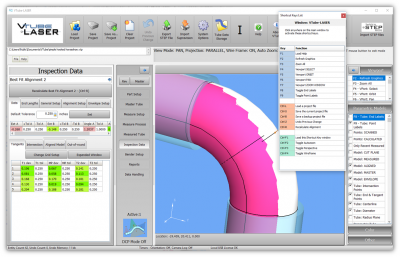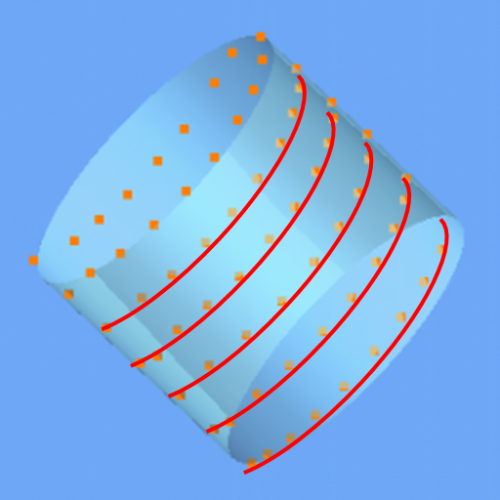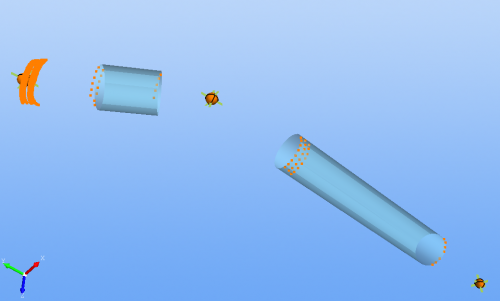Compare UniScan to MultiScan Measurements
|
Compare UniScan and MultiScan Measurements |
VTube-LASER UniScan Measurements
|
VTube-LASER UniScan measurements take one group of evenly spaced laser stripes along the profile of each straight cylinder. These stripes each contain points. The method used with UniScan is similar to spray painting. VTube-LASER UNISCAN - The Best Way to Calculate the CenterlineUniScan is the best way to get to a true centerline average - especially for deformed diameters in straights. The reason is because UniScan averages out the entire surface of the straight measured. Compared to Fork Probe MethodMethods that use fork proves take very limited data on the surface (like fork probes with two crossing infrared beams. Examples are the 6-axis tube probe systems from HEXAGON. Compared to Silouette MethodMethods that use tube edge are "silouette" measuring centers. Examples are like the Eaton Leonard LASERVISION and the AICON TubeInspect system. These systems only look at the edge of the diameter and cannot use that data to calculate the same data that VTube-LASER can in its Cylinder Fit window.
|
MultiScan Measurements
|
MultiScan only measures near the tangents of a straight. (The tangents are the locations on the straights where the straights and bends meet.) |
Other Pages
- Back to VTube-LASER




